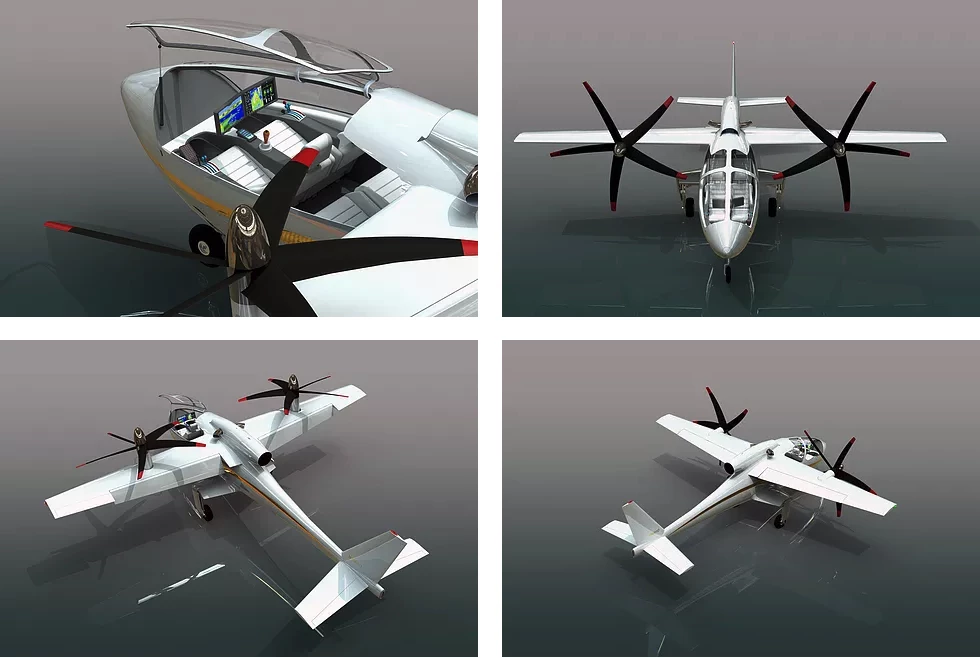Superyacht designer Steve Kozloff has turned his hand to next-gen aviation with a twin-prop VTOL aircraft that promises a monster 1,380-mile (2,222-km) range, as well as the ability to take off and land conventionally where there's a runway.
The Pegasus concept adorns a very helicopterish four-seat cabin with a set of fat wings, each fitted with a large tilt-capable propeller, 11 ft (3.3 m) in diameter. These props are driven by electric motors, each making around 700 horsepower, and together, says Kozloff, they'd make around 7,500 lb of thrust. The aircraft would weigh 3,300 lb (1,497 kg) dry and 6,000 lb (2,722 kg) fully loaded, leaving plenty of room in the weight budget for cargo.
The propulsion system would be powered by a generator, spun by a Pratt & Whitney PT6A-67R turboprop engine capable of making 1,424 shaft horsepower. The aircraft would carry some 250 gal (946 L) of fuel, giving you that colossal range estimate.
With retractable landing gear, it's capable of conventional takeoff and landing, and Kozloff says it's capable of reaching takeoff speed within 400 ft (122 m) of runway. It'd pull up quickly upon landing, too, reversing its props to get it stopped in a short distance.

It promises a very quick cruise speed over 345 mph (556 km/h), and a top speed of (checks spec sheet) ... "Impractically fast," which I'm sure is some kind of aviation term. Kozloff says the aircraft's "stunning looks" help the Pegasus live up to its nomenclature as a "mythical white stallion."
Mythical indeed. The eagle-eyed reader will have noticed, possibly in the headline above, that two props deliver approximately zero redundancy. Damage one of those suckers on takeoff, and if you're not clear of your superyacht, it's going to get a new deck ornament, maybe a pyrotechnics show or a new Pollock for the bar, depending on how many passengers were on board.
The configuration is not unprecedented, of course; it's similar to the first tilt-rotor aircraft, the V-22 Osprey, and its civilian equivalent, the AgustaWestland AW609. But both of these have proven extremely expensive, and AgustaWestland has found the AW609 a tough sell at two to three times the cost of a helicopter – even if it does fly twice as far, twice as fast. Presumably it's been an even tougher sell since a prototype crashed in 2015, killing both long-time test pilots after more than 1,200 flight hours.

So the Pegasus might work in a physics sense, and it might be certifiable, and its design might thrash the pants off the eVTOL class for range, speed and payload, but it's a notoriously difficult and expensive design to produce, it offers no propulsion redundancy, and it runs on fossil fuel.
And it's been designed by a superyacht guy, not one of whose many fine-looking Goliath Series boat designs appear to be under construction at this point either. So yes, not one we're likely to see flying any time soon, but it's fun to think about, and it does give Kozloff a neat little futuristic jigger to add to the cinematic universe of his many superyacht renders. Phwoar, this one looks like a giant pirate ship with its face painted.
Source: The Goliath Series







